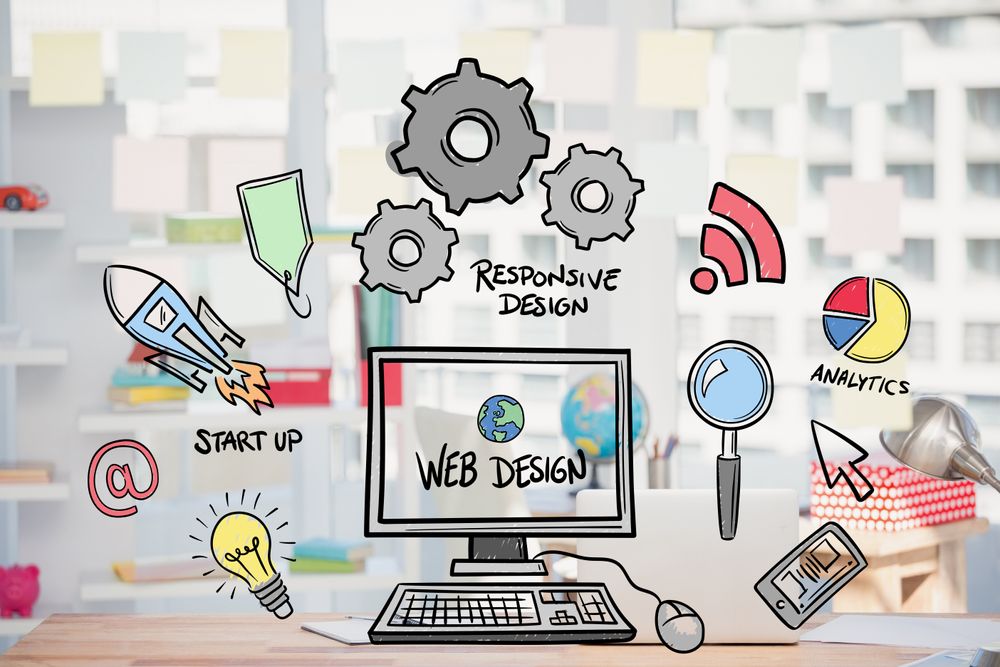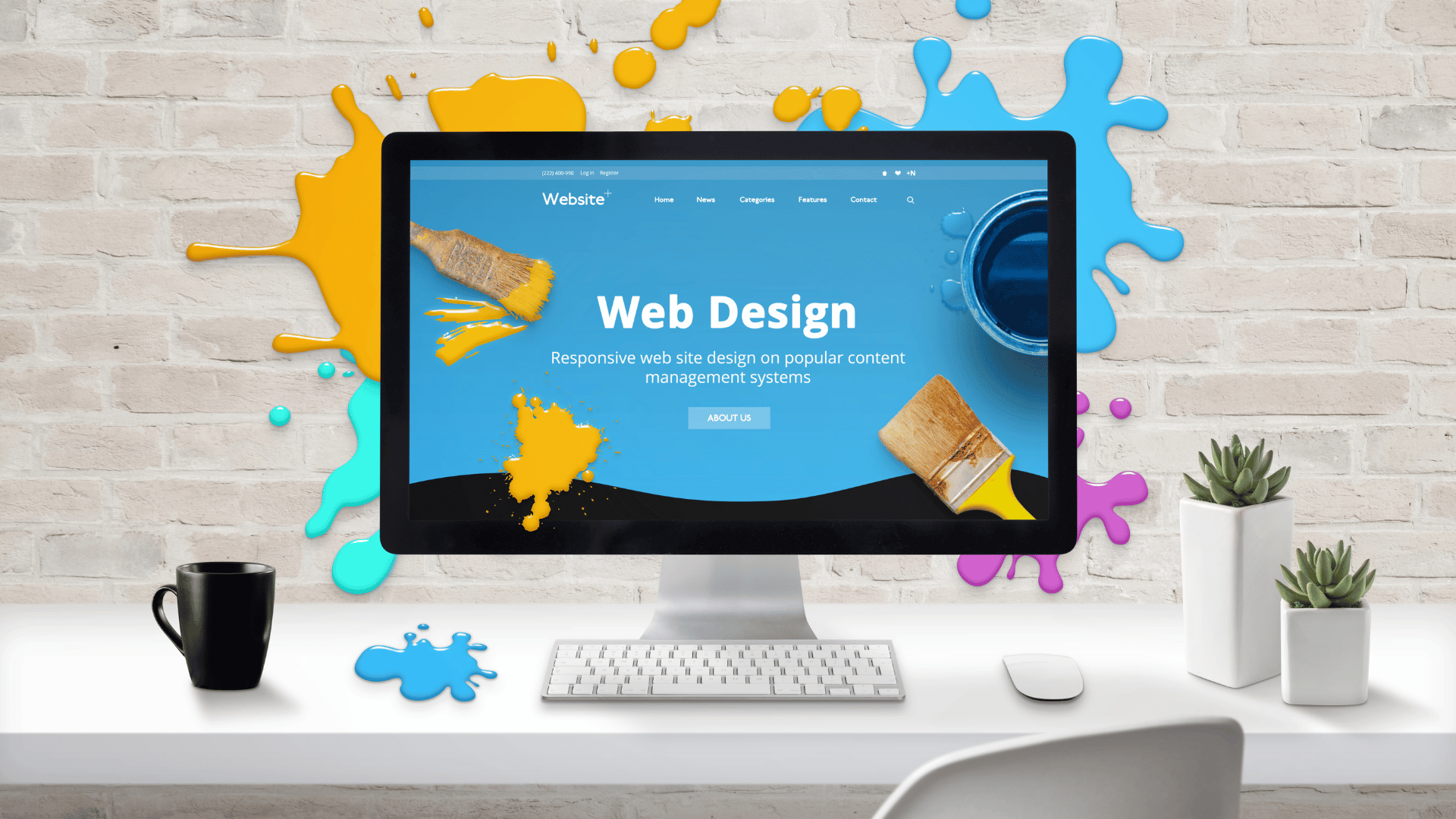Exploring Innovative Patterns in Web Design for Modern Businesses
The landscape of web design is continually evolving, mirroring the vibrant demands of modern-day organizations. Current patterns highlight a preference for minimalism, strong typography, and engaging interactivity. Business increasingly prioritize user experience through mobile-first concepts and personalized content. Additionally, a concentrate on sustainability is getting grip. Comprehending these trends is crucial for businesses intending to stick out in a congested market. What implications do these changes hold for the future of digital interaction?
Welcoming Vibrant Typography
Vibrant typography has actually become a specifying component in modern web design, capturing attention and sharing messages with striking clarity. This trend focuses on visually impactful message that boosts user interaction and brand identification. Developers usually utilize distinct fonts and extra-large typefaces to produce a hierarchy, guiding visitors with web content effortlessly.
The critical use of bold typography permits reliable storytelling, making it possible for brand names to interact their worths succinctly. It serves not just visual purposes yet also useful ones, as it improves readability throughout gadgets and display dimensions.
As websites complete for user focus, bold typography attracts attention in a saturated digital landscape. Its versatility enables designers to explore contrasting layouts and colors, additionally amplifying its performance. Inevitably, accepting strong typography stands for a change towards even more meaningful and communicative web design, cultivating a much deeper link between brand names and their target markets.
The Increase of Minimalist Design
As digital settings end up being increasingly cluttered, the surge of minimal design offers a renewing option that focuses on simpleness and functionality. This style ideology remove unneeded elements, enabling material to take spotlight. By concentrating on clean lines, adequate white space, and a limited shade palette, minimal style enhances user experience and improves navigation.
Companies embracing this pattern objective to convey their brand message plainly and successfully, fostering a feeling of calmness and clearness. The lack of distractions helps individuals focus on essential details, resulting in boosted engagement and conversion prices. In addition, minimal design straightens well with mobile-first strategies, guaranteeing that sites stay user-friendly and obtainable across numerous devices.
Eventually, the increase of minimalist layout shows a broader shift towards focusing on user demands and choices, making it an effective tool for modern businesses wanting to make an enduring impact in the digital landscape.
Immersive Animations and Interactivity
While many web designers embrace minimal aesthetics, another engaging trend acquiring traction is using immersive computer animations and interactivity. This approach enhances user engagement by developing intriguing experiences that attract site visitors into the web content. Designers use vibrant elements such as computer animated histories, scrolling effects, and interactive infographics to communicate complex concepts in an available manner.
These animations not only supply visual rate of interest yet additionally guide customers via the navigation procedure, making interactions extra user-friendly. Float impacts and computer animated shifts can motivate individuals to discover even more, leading to enhanced time spent on the website.
In addition, this pattern straightens with the more comprehensive motion towards narration in web design, where computer animations work as narrative gadgets that share brand messages successfully. By incorporating immersive animations and interactivity, businesses can separate themselves in a crowded online landscape, inevitably enhancing user contentment and brand name commitment.
Mobile-First Layout Concepts
Mobile-first design principles emphasize focusing on user experience by making certain internet sites operate seamlessly on smaller screens. This technique integrates responsive layout strategies that adjust to various tool sizes while maintaining visual stability. Furthermore, it focuses on touchscreen navigating style, improving functionality for mobile individuals.
Prioritizing User Experience
How can developers effectively focus on user experience in a significantly mobile-centric globe? Stressing mobile-first style concepts is necessary, as individuals mainly involve with sites with mobile phones. This technique urges developers to streamline content, guaranteeing it is navigable and quickly obtainable on smaller screens. Key practices include simplifying navigating, minimizing load times, and employing touch-friendly elements that enhance interactivity. Additionally, focusing on understandable typography and intuitive layouts can considerably boost user fulfillment. Developers ought to continually gather user responses to improve their methods, adapting to developing user needs and preferences. By focusing on these elements, organizations can create an appealing digital experience that fosters commitment and drives conversions, eventually lining up with the expectations these days's mobile customers.
Responsive Layout Strategies
Developers welcome responsive layout methods to produce adaptable and adaptive web experiences that accommodate numerous screen sizes. This approach prioritizes mobile-first style concepts, making sure peak capability on smaller sized gadgets before scaling up for larger screens. By utilizing fluid grids, flexible images, and media questions, designers can preserve a natural visual identification across all platforms. This strategy not just enhances user interaction yet additionally enhances online search engine rankings, as mobile-friendly websites are favored by search algorithms. In addition, responsive formats enable companies to get to a broader audience, accommodating customers on desktops, tablet computers, and smart devices alike. Generally, executing these strategies is essential for modern web design, ensuring that businesses continue to be affordable in an ever-evolving electronic landscape.
Touchscreen Navigation Layout
With the surge of smart phones, touchscreen navigating has come to be a basic element of web design. Designers are progressively taking on mobile-first principles to enhance user experience and involvement. Web Design services. Efficient touchscreen navigation focuses on larger buttons and user-friendly gestures, allowing individuals to connect quickly with web content. This method lowers stress and motivates expedition, as users can navigate effortlessly with their fingers. Additionally, incorporating swipe motions and tap capability caters to the all-natural actions of mobile customers. Comments systems, such as visual signs and animations, enhance functionality further by validating activities. As touchscreens dominate user communications, utilizing these layout aspects not only aligns with modern expectations yet likewise cultivates a much more easily accessible and satisfying browsing experience for all customers
Customized User Experiences
What makes a customer feel truly engaged on a web site? The answer usually depends on personalized user experiences. By tailoring content and navigation to individual choices, companies can create a meaningful link with their target market. This customization can be attained through numerous approaches, such as evaluating user behavior, using cookies, and using personalized referrals based upon previous interactions.
Shopping systems that recommend items based on searching history not just improve user experience but also raise conversion prices. Additionally, integrating vibrant web my blog content that adapts to the user's area or time of day can even more enrich interaction.
Additionally, individualized greetings or messages can make customers feel valued and understood. As modern services seek to stand apart in a competitive electronic landscape, welcoming individualized user experiences comes to be necessary, cultivating commitment and encouraging repeat check outs. Eventually, this technique changes a basic internet site right into an interactive platform that resonates with its audience.
Sustainability in Web Design
As the digital landscape proceeds article to develop, the significance of sustainability in web design has gotten substantial interest. Designers are increasingly familiar with the environmental impact their creations can have, motivating a shift in the direction of green practices (web design company). Lasting web design concentrates on optimizing internet sites to lower power consumption and carbon impacts. Strategies include using minimalistic layout principles, maximizing pictures, and employing effective coding practices to enhance loading speeds
Moreover, the selection of hosting companies plays a crucial function; many designers are now selecting environment-friendly holding services powered by renewable resource. By focusing on availability and easy to use navigation, sustainable styles likewise provide to a wider target market, improving use. This mindful technique not just appeals to environmentally-minded consumers but additionally adds to the overall durability and efficiency of internet sites. Ultimately, sustainability in web design mirrors a growing pattern towards accountable digital methods that align with modern business worths.

Frequently Asked Concerns
Just How Can I Select the Right Color Pattern for My Site?
To select the appropriate color design for a web site, one must consider the brand's identification, target audience, and psychological effect. Utilizing shade theory and testing combinations can improve user experience and visual allure considerably.
What Are the very best Tools for Prototyping Web Styles?
The very best tools for prototyping website design include Figma, Lay out, Adobe XD, and InVision. These systems supply user-friendly user interfaces, partnership features, and comprehensive collections, making them excellent for designers to develop and improve their ideas successfully.
Exactly how Do I Determine the Efficiency of My Web Design?
To gauge web design effectiveness, one must analyze user engagement metrics, conversion rates, and use feedback (Web Design services). A/B screening and heatmaps can additionally offer understandings into user actions, directing needed changes for improved performance and user experience
What Prevail Web Design Blunders to Stay Clear Of?
Usual web design mistakes consist of chaotic layouts, poor navigating, slow-moving loading times, lack of mobile optimization, insufficient contrast, and disregarding user responses. Staying clear of these challenges improves user experience and raises general efficiency of the internet site.
Exactly how Frequently Should I Update My Web Site Design?
A site layout should be upgraded every a couple of years, or faster if considerable adjustments in branding or technology occur. Routine updates maintain the website fresh, functional, and straightened with current user expectations.
